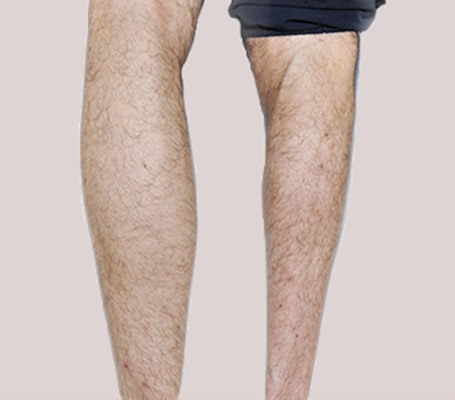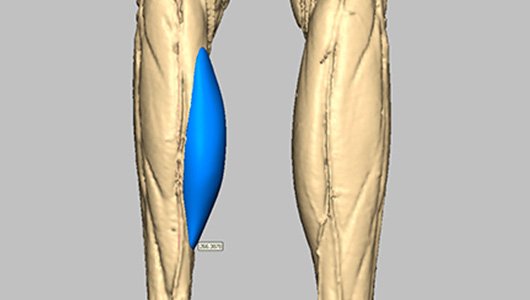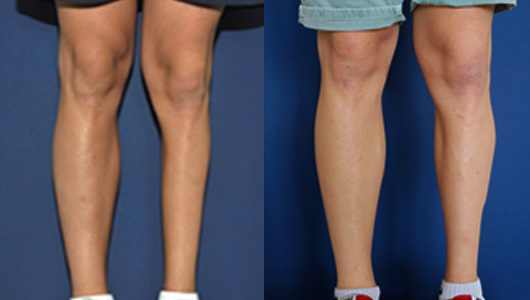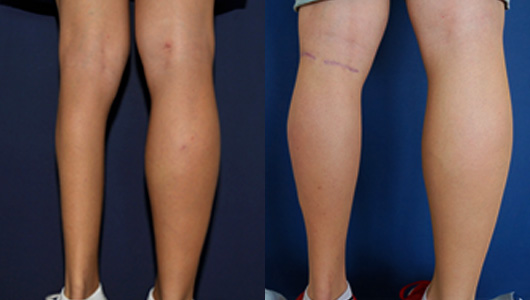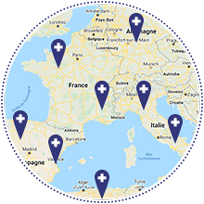Definition and origin of the calf atrophy
Atrophy of the calf corresponds to a lower volume of the leg (unilateral or bilateral), and concerns mainly the muscle groups of the posterior part (gastrocnemius), incidentally on the knee, leg and ankle bones.
The source of this atrophy can be innate or constitutional. Acquired atrophies occurs after a disease or a surgery : poliomyelitis, clubfoot, amyotrophic lateral sclerosis, lupus, meningocele, foot surgery. There is a deformity, which is often unilateral, and an asymmetry compared to the other limb.
The functional consequences are generally moderate or due to restricted physical activities induced by poor body image. The objective of this correction is purely morphological.
3D custom-made technique
From a 3D scan of the patient, we make a virtual copy of their calf, including each tissue (bone, muscle, skin, cartilage). The implant is then virtually designed by computer. Our partner Implantech takes care of the final manufacturing of the silicone implant from the 3D digital model, following the ISO standards. This technique enable us to obtain a definitive implant, with invisible edges, perfectly adapted to the anatomy of the patient's calf.

